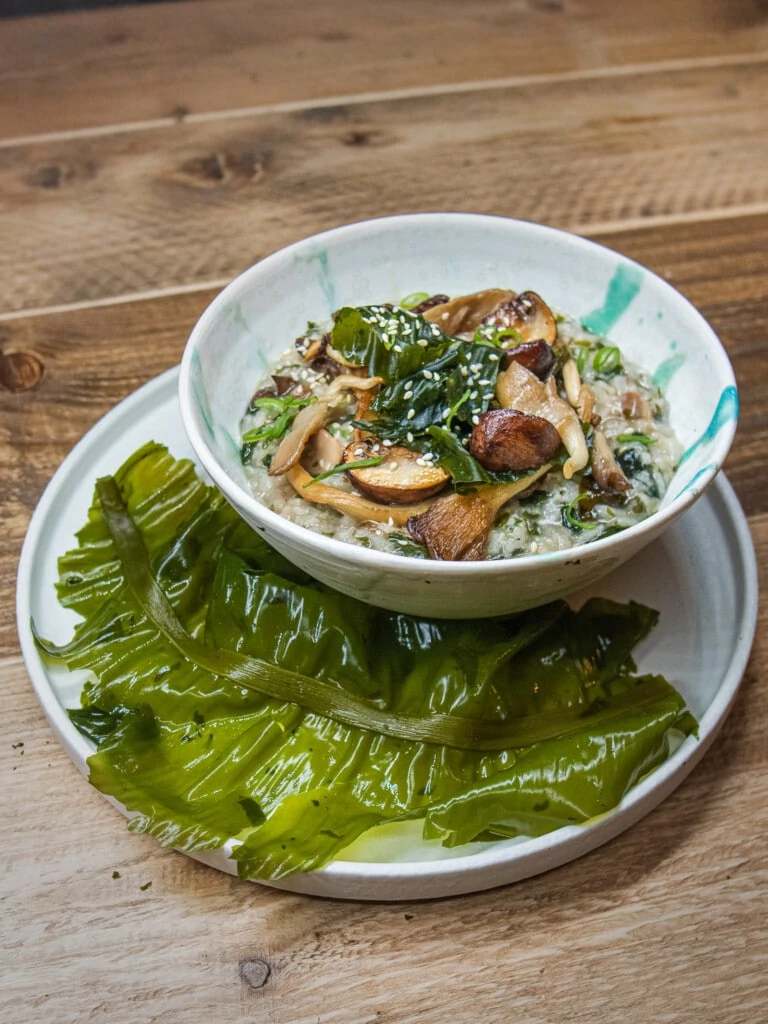Umami? Umawhat?
We often mention that seaweed is – amongst many other things – rich with umami flavour. In fact, we’ve even named one of our products after this contemporary, difficult to describe concept. But what actually is umami? Read on for our deep dive into the elusive fifth flavour!

In 1908, Kikunae Ikeda, a Japanese chemist, identified monosodium glutamate (MSG) as the chemical compound behind the savoury flavour of dashi – a traditional Japanese stock with kelp as the key ingredient. Ikeda discovered that MSG made up between 2 – 3% of the kelp’s dry weight; a relatively large amount. He synthesised the molecule by extracting glutamate from seaweed and mixing it with water and salt to stabilise the compound.
He named his creation umami, which is a portmanteau of the Japanese words umai (meaning delicious taste) and mi (meaning essence). Ikeda patented the finished product, and it became one of Japanese food science’s greatest commercial successes.
Initially, the product (marketed as ‘Aji no Moto’ or ‘Essence of Taste’) was marketed towards middle-class housewives, appealing to the trend of science-led cooking in the home kitchen. It was also marketed towards buddhists as a way of improving the flavour of vegetarian and vegan dishes.
By the 1950s, MSG (sold as a fine white powder) was popular in all kinds of food across America, even featuring in the most published cookbook in U.S history – The Joy of Cooking.
By the 1960s, the public mood towards the use of chemicals in the kitchen was changing. In 1968, an article published in the New England Journal of Medicine floated the hypothesis that MSG was to blame for a multitude of health complaints, ranging from headaches, weight gain, weakness and heart palpitations. This quickly caught on, and the public perception of MSG soon went from delicious natural flavour enhancer to dangerous chemical additive, fuelled by racially-charged biases and misconceptions about the cleanliness of foreign food.

Despite the fact that MSG has always been recognised as a safe food by the FDA, and that early science suggesting its adverse health effects have been debunked, MSG struggles with bad press to this day. It’s an unfair reputation that we seaweed-enthusiasts can empathise with!
As with anything, an excess of MSG may cause unwanted effects, and there will be some people who are more susceptible to those effects than others. However, the vast majority of us can enjoy MSG in moderation as part of a healthy and delicious diet. A great way to do this is to enjoy MSG in it’s naturally occurring form – aka, eat more seaweed!
Umami is described as the fifth flavour, alongside salt, sweet, bitter and sour. As well as seaweed, foods such as parmesan cheese, tomatoes, mushrooms, soy sauce and most meats are rich in umami – it occupies just as much space in the western diet as it does in the east, even if we don’t have our own word to describe it! The word ‘savoury’ comes closest; a full-bodied, well-rounded saltiness with a hint of sweetness for balance.
It’s an extremely moreish taste that has probably contributed to the reputation of MSG as a food that promotes weight gain – it’s so delicious that you want to repeatedly fill your plate. With seaweed, this is no problem, providing that you are mindful of your iodine intake. You can enjoy as much of that delicious umami flavour as you want, whilst enjoying all the health benefits of a big plate of vegetables!
As food horizons continue to broaden, we hope that people will look more fondly upon umami, seaweed, and unfamiliar ingredients from other cultures in general. There is so much joy to be had in the world of food, and there is no reason to limit ourselves to only what we know. Stepping outside of your comfort zone could be the most delicious step you ever take!
With thanks to Anna Maria Barry-Jester and Ole G.Mouritsen for supporting material.